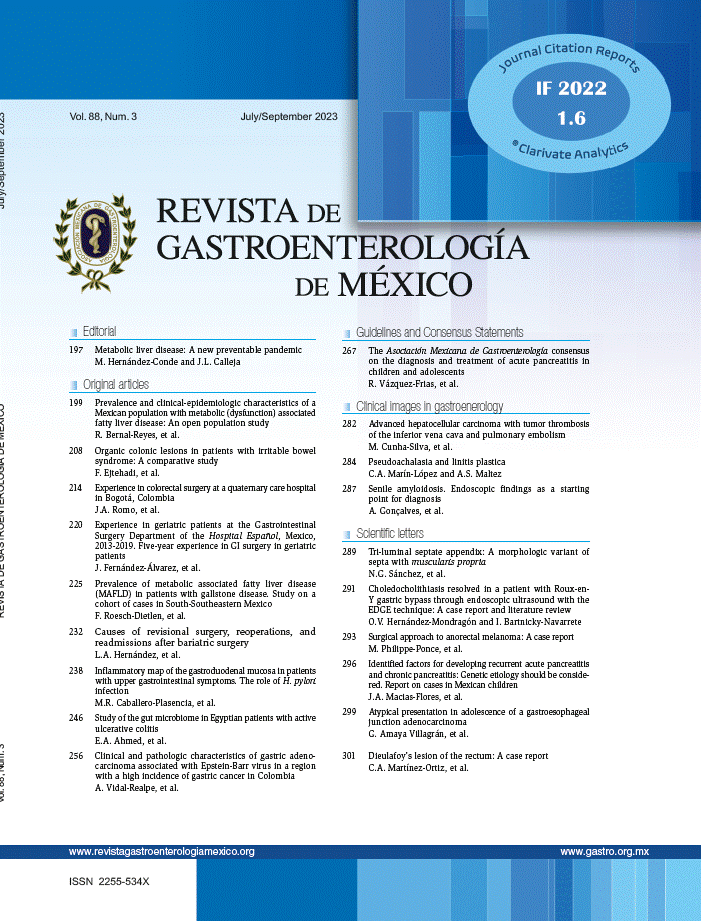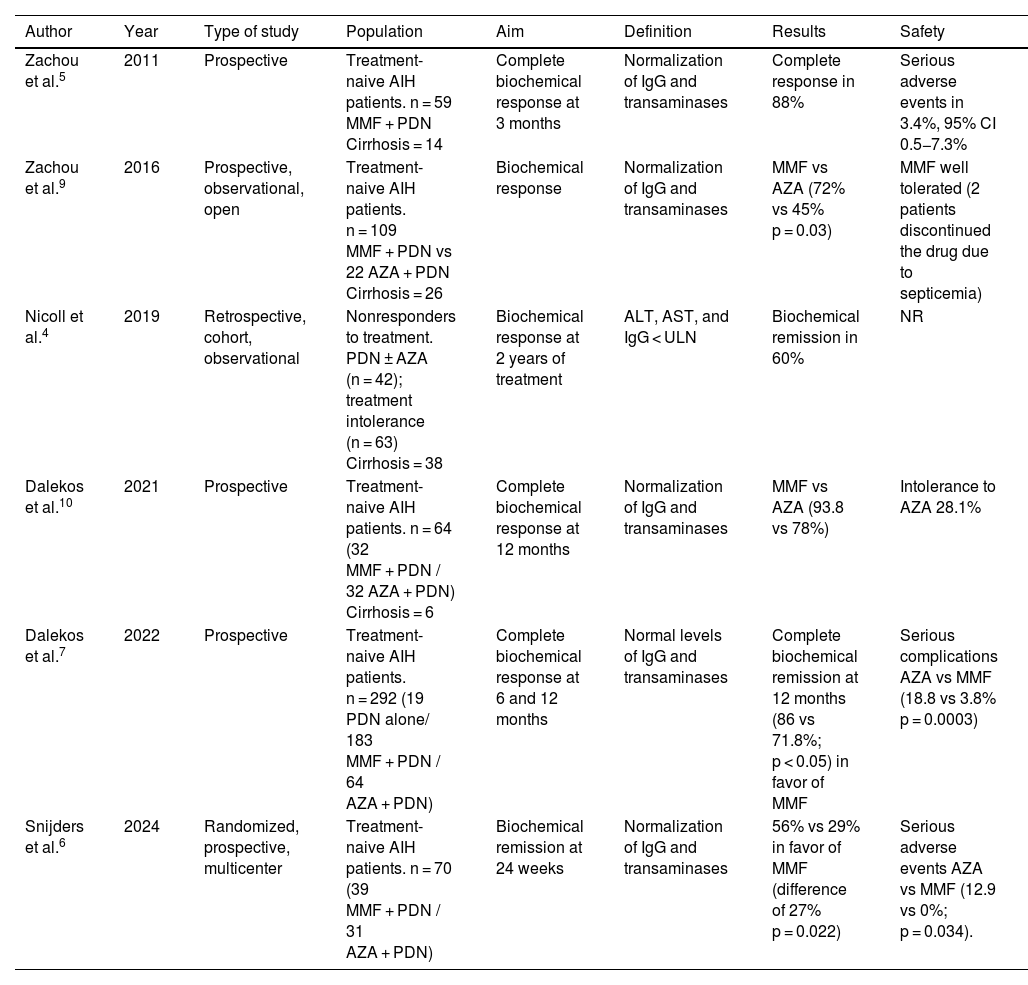Autoimmune hepatitis (AIH) is a chronic inflammatory liver disease that can progress to fibrosis, cirrhosis, and liver failure if remission is not achieved. It affects persons of all ages, races, and ethnicities, albeit 70–95% of affected adults are female. AIH treatment goals include the resolution of symptoms and liver inflammation, prevention of the development of fibrosis or progression to it, and the maintenance of remission. The first-line treatment currently recommended by the international guidelines is remission induction with steroids, followed by maintenance with nonsteroidal immunosuppressants.1 Several studies have evaluated biochemical response with different steroid doses. For example, a recent retrospective, multicenter study found there were no differences in reaching complete response after 6 months of treatment, comparing a dose of 30 mg/day of prednisolone with a dose of more than 30 mg/day. However, other studies have shown that using a higher dose of prednisolone at the start of treatment was related to a faster normalization of ALT and better long-term survival.2
On the other hand, for decades we have known that azathioprine (AZA) has been the standard maintenance treatment in AIH, but this recommendation is based on studies conducted more than 20 years ago, with limited methodological designs. We also know that with the current treatment regimen, only 50–60% of patients achieve complete biochemical response, conditioning limited histologic resolution and a greater risk of disease progression. In addition, between 15 and 25% of patients treated with AZA develop intolerance or lack of response, making it necessary to interrupt treatment and use second-line regimens.3
Mycophenolate mofetil (MMF) is a selective, reversible, noncompetitive inhibitor of the type II isoform of inosine-5’-monophosphate dehydrogenase, considered a selective immunosuppressant with few adverse effects. Retrospective studies have evaluated the safety and effectiveness of MMF as second-line treatment in AIH, in which the desired biochemical response was reached. MMF is currently considered an option in patients with standard treatment intolerance or refractoriness.4 Given those findings, MMF use has recently been studied as first-line treatment. Relevantly, Zachou et al.5 prospectively evaluated MMF as induction and maintenance treatment and reported a clinical and biochemical response of 88% and a partial response of 12%, superior to standard treatment. Only two patients with cirrhosis presented with severe adverse events (septicemia). In the CAMARO study, Snijders et al.6 described a significant difference in favor of MMF for achieving biochemical remission at 24 weeks, compared with AZA (56.4% vs 29%, a percentage difference of 27.4%; 95% CI 4–46.7 p = 0.022), and the serious adverse event rate was lower with MMF vs AZA (0% vs 12.9% p = 0.034), as well. Likewise, in their study, Dalekos et al.7 reported complete biochemical remission at 12 months, in favor of MMF vs AZA (86% vs 71.8%; p < 0.05), and at the end of the follow-up at 57 months, the results were similar (96% vs 87.2%; p = 0.03). Compared with MMF, AZA use had more serious adverse effects (18.8 vs 3.8%; p = 0.0003).
Despite the different promising results, those articles had limitations, the main one being the fact that the sustained biochemical response to long-term MMF use or discontinuation of the immunosuppressant were not evaluated. Another disadvantage was the lack of a report on the impact of histologic remission. Lastly, regarding methodology, some of the studies were not randomized and others were open label trials. Table 1 describes other related studies.
Studies on MMF use in AIH.
| Author | Year | Type of study | Population | Aim | Definition | Results | Safety |
|---|---|---|---|---|---|---|---|
| Zachou et al.5 | 2011 | Prospective | Treatment-naive AIH patients. n = 59 MMF + PDN Cirrhosis = 14 | Complete biochemical response at 3 months | Normalization of IgG and transaminases | Complete response in 88% | Serious adverse events in 3.4%, 95% CI 0.5−7.3% |
| Zachou et al.9 | 2016 | Prospective, observational, open | Treatment-naive AIH patients. n = 109 MMF + PDN vs 22 AZA + PDN Cirrhosis = 26 | Biochemical response | Normalization of IgG and transaminases | MMF vs AZA (72% vs 45% p = 0.03) | MMF well tolerated (2 patients discontinued the drug due to septicemia) |
| Nicoll et al.4 | 2019 | Retrospective, cohort, observational | Nonresponders to treatment. PDN ± AZA (n = 42); treatment intolerance (n = 63) Cirrhosis = 38 | Biochemical response at 2 years of treatment | ALT, AST, and IgG < ULN | Biochemical remission in 60% | NR |
| Dalekos et al.10 | 2021 | Prospective | Treatment-naive AIH patients. n = 64 (32 MMF + PDN / 32 AZA + PDN) Cirrhosis = 6 | Complete biochemical response at 12 months | Normalization of IgG and transaminases | MMF vs AZA (93.8 vs 78%) | Intolerance to AZA 28.1% |
| Dalekos et al.7 | 2022 | Prospective | Treatment-naive AIH patients. n = 292 (19 PDN alone/ 183 MMF + PDN / 64 AZA + PDN) | Complete biochemical response at 6 and 12 months | Normal levels of IgG and transaminases | Complete biochemical remission at 12 months (86 vs 71.8%; p < 0.05) in favor of MMF | Serious complications AZA vs MMF (18.8 vs 3.8% p = 0.0003) |
| Snijders et al.6 | 2024 | Randomized, prospective, multicenter | Treatment-naive AIH patients. n = 70 (39 MMF + PDN / 31 AZA + PDN) | Biochemical remission at 24 weeks | Normalization of IgG and transaminases | 56% vs 29% in favor of MMF (difference of 27% p = 0.022) | Serious adverse events AZA vs MMF (12.9 vs 0%; p = 0.034). |
AIH: autoimmune hepatitis; AZA: azathioprine; MMF: mycophenolate mofetil; NR: Not reported; PDN: prednisone; ULN: upper limit of normal.
Unlike AZA, the main reasons for treatment abandonment with MMF are its high cost, and in reproductive-age women, the desire for pregnancy. Reports have shown that the administration of MMF during pregnancy was associated with a higher risk of miscarriage in the first trimester of 49% and congenital malformation in up to 27%. The most common birth defects were facial malformations (cleft lip and palate, micrognathia, hypertelorism), eye and ear defects (coloboma, microphthalmos, outer ear malformation), heart malformations (atrial and ventricular septal defects), esophageal atresia, and spina bifida.8 Therefore, in reproductive-age women, MMF should be administered under strict contraceptive measures, which limits its use in that group of patients. Another important limitation of MMF, compared with standard treatment, is its elevated cost.
In conclusion, the recent published evidence has shown that MMF use results in better biochemical remission rates and fewer adverse effects, compared with AZA. Therefore, the need to update the current guidelines for the treatment of AIH, with MMF possibly being a first-line option in the treatment of the disease, should be considered.
Ethical considerationsThe aim of this work was to express an opinion based on the results of previous studies, and so patient privacy was not jeopardized. Because no interventions were carried out, we consider that our study did not require submission to the institutional ethics committee.
Financial disclosureNo financial support was received in relation to this article.
The authors declare that there is no conflict of interest.




